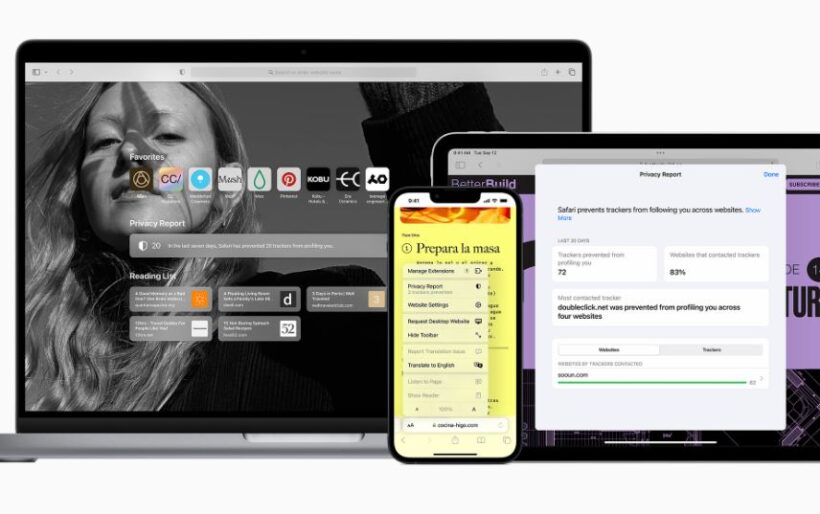The web is changing dramatically as mobile surfing keeps rising quickly. Mobile devices are now the main method we use to access the internet, closing the gap between desktop and mobile usage in recent years. This change is impacting browser market share and forcing web browsers to modify their capabilities to meet the particular requirements of mobile users.
Let’s look at the reasons behind the shift from Mobile Browsers to Desktop Browsers, study usage data, and see how browsers are stepping up to the plate to deliver a seamless experience across platforms as we dive into the changing dynamics of mobile versus desktop browsers.
The Mobile Browsing Revolution
It’s undeniable that mobile browsing is on the rise. With smartphones and tablets becoming increasingly integral to our daily lives, the gap between mobile and desktop usage continues to widen. According to a report by BroadbandSearch, mobile web traffic increased from 51.3% in 2016 to 53% in 2019, while desktop web traffic held a relatively higher share at 56.7% in the same year. However, trends indicate that mobile internet use is poised to continue growing, potentially eclipsing desktop usage in the coming years.
This shift towards mobile browsing is driven by several factors. Firstly, the convenience and portability offered by smartphones and tablets are unparalleled. Users want the internet in their pockets, accessible nearly everywhere they go. Additionally, advancements in mobile technology have resulted in devices with larger screens, improved processing power, and enhanced browsing capabilities.
By the Numbers: Mobile vs. Desktop Browsing Time
When it comes to browsing time, mobile devices are winning. On average, users spend around 203 minutes per day consuming media on their mobile devices. This trend is further emphasized by eMarketer’s findings that smartphone users spent about 4 hours per day on the internet in 2020, with 88% of that time spent using apps. In contrast, a study by Dscout revealed that users touch their phones at least 2,617 times a day, indicating just how integral mobile devices have become in our daily lives.
While mobile browsing is on the rise, it’s worth noting that desktop computers and laptops still have their place. They are preferred for more complex computing tasks and offer larger screens, making them ideal for activities that require extended periods of focus, such as working on a project or editing a video.
Browser Market Share: Mobile Browsers vs. Desktop Browsers
As mobile browsing gains popularity, it’s impacting the browser market share. According to recent statistics, mobile devices account for approximately 60% of web traffic worldwide. This shift has not gone unnoticed by browser developers, who are now focusing their efforts on optimizing the mobile browsing experience.
When examining browser market share, it’s important to consider regional variations. For example, in the United States, mobile devices (smartphones and tablets) contribute to 63% of all online traffic. In contrast, desktop computers and laptops hold a larger share in certain European countries, where users tend to prefer the expanded screen real estate and processing power for specific tasks.
Adapting to Different Screen Sizes and User Experiences
The shift towards mobile browsing has prompted web browsers to adapt their offerings to cater to different screen sizes and user experiences. Let’s explore some of the ways browsers are rising to the challenge of providing a seamless experience across devices.
1. Responsive Design and Mobile Optimization
Responsive design has become a crucial aspect of web development. Websites are now designed to be “mobile-friendly,” employing techniques such as dynamic layouts that adjust to different screen sizes. This ensures that users have a positive browsing experience regardless of their device.
Additionally, mobile optimization techniques, such as lazy loading of images and compressed file sizes, help reduce data consumption and improve loading times on mobile devices.
2. Browser Features Tailored for Mobile
Browser developers are introducing features specifically tailored for mobile users. For example, browsers like Chrome and Firefox offer synchronization across devices, allowing users to access their browsing history, bookmarks, and even open tabs from their mobile and desktop devices seamlessly.
Some browsers, like Samsung Internet, provide a robust “Secret mode” that hides downloaded files and allows users to password-protect private tabs, enhancing privacy and security on mobile devices.
3. Privacy and Security Enhancements
With mobile browsing on the rise, privacy and security have become even more critical. Browsers like DuckDuckGo and Brave have gained popularity by offering enhanced privacy features. They block tracking scripts and provide transparent information about the trackers they block, giving users greater control over their data.
Conclusion: Embracing the Mobile Future
The shift towards mobile browsing is undeniable, and it’s affecting how we interact with the web. Browser developers are adapting by optimizing their offerings for mobile screens, introducing mobile-specific features, and enhancing privacy and security measures.
While mobile browsing is on the rise, it’s important to recognize that desktop browsing still holds a significant share, especially for specific tasks that require larger screens or more processing power. As we move forward, it’s clear that web browsers will continue to evolve to meet the diverse needs of their users, ensuring a seamless browsing experience across all devices.
Read Next:
The Global Web Browser Market: A Geographical Look at Usage Trends
The Surprising Impact of Ad Blockers on Web Browsers and Online Advertising






